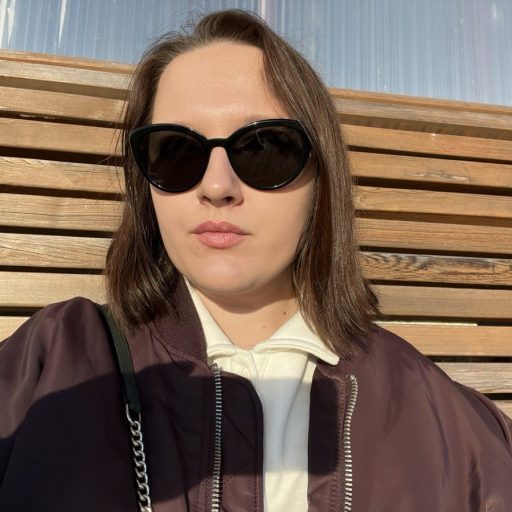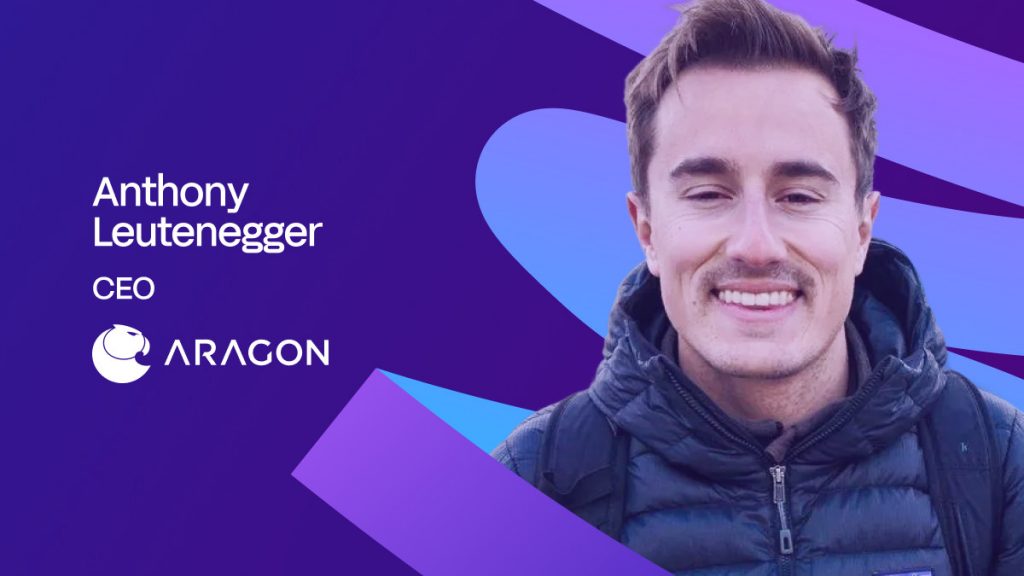
Victoria d’Este
Posted: Nov 21, 2025 2:39 PM Updated: Nov 21, 2025 2:40 PM

Correction and fact check date: November 21, 2025, 2:39 p.m.
briefly
Anthony Leutenegger, CEO of Aragon, shares how DAOs are maturing in 2025 and evolving into more resilient, transparent, and scalable governance systems.

From early experiments to leading one of the ecosystem’s most influential governance projects, few leaders have seen the development of DAOs from as many different angles as Anthony Leutenegger. In this interview, Aragon CEO explains how decentralized governance is maturing in 2025, why the next wave of DAOs will be very different from previous generations, and what it really takes to build resilient and transparent decision-making systems at scale.
Anthony, can you share your journey with Web3?
I have been working in Aragon for four and a half years. I joined cryptocurrency because I discovered a great project called Vocdoni, which was a subsidiary of Aragon, and was building a blockchain-based voting protocol. The goal was ultimately to ensure that nation-states held elections that were free of corruption.
I thought about what an amazing and perfect use case blockchain technology is. We live in a world and industry where there’s a lot of speculation and money flowing, and that’s a legitimate use case, but if we could have corruption-free elections, we could solve a lot of the world’s problems.
That’s why I applied to Vocdoni. I eventually moved to the Aragon project, which owned Vocdoni at the time and focused more on governance, capital distribution, and token economics at a much higher level than voting. I later took over the company and things are going very well now.
Can you give us an overview of Aragorn’s current mission and how it has evolved over the years?
Yes, our current mission has definitely evolved over the past few years. In the past, it was important to allow organizations to experiment with governance at the speed of software. The point is that decisions can be made without a trusted intermediary. This is the same as making payments on the blockchain. Eliminates the middleman. Blockchain technology allows you to remove intermediaries from the execution of tasks. In the traditional world, people vote or participate, but taking action usually requires someone else to take action.
Now decisions like moving funds, upgrading code, granting access, etc. can be made by a larger group of people without the need for a middleman. It becomes very resistant to censorship. This is the first time in history that we can do this because we follow the law as the law.
That has been Aragon’s long-standing mission, and we are still working hard on governance. We still allow organizations to build access control mechanisms into how they manage their code base. For example, if Lido wants to upgrade its code, it will do so through Aragon’s smart contracts. We protect their code base. The same goes if Katana wants to move funds to the new Polygon project.
Now we have expanded into token economics. We support projects that build their own governance systems, token economic systems, and growth flywheels. Today our mission is much broader.
What do you think are the key differentiators of Aragon’s governance framework compared to other DAO tools or platforms?
Yes, we definitely have the latest modular models. We are decoupling vaults and core permissions from governance methodologies and anyone can install these methodologies or plugins to achieve what they want. For example, if you want a type of governance other than token-based voting, you can install a multisig plugin or a digital identification plugin.
Multiple plugins can be installed at the same time to allow different groups, such as multi-signatures and token holders, to manage them together. It is highly customizable, upgradable and always includes token economics. Tokens drive almost everything in the industry, so the Aragon Stack allows you to create locks, stakers, and mechanisms for locking, staking, and capital distribution. It’s modular, customizable and future-proof.
What is the strategic importance of modular governance arrangements, for example plug-ins to scale the organization over time?
Yes, it’s really important. Major projects want to more easily coordinate governance and capital flows, but many cannot do this safely because they are tied to old, heavy library-based contracts. Modularization makes coordination easier. Upgrading becomes as simple as uninstalling and installing new plugins that are just part of the code base.
As it decentralizes over time, it can upgrade from multisig to token holder voting. Capital flow can be controlled by adding a staking mechanism for token holders. This makes governance more secure, customizable, and future-proof. There is no doubt that it is a better system.
What are the most important policy or regulatory trends that will impact on-chain organizations over the next 12 to 24 months?
Yes, that’s a good question. What we are discussing, especially in the US and companies like a16z, is that on-chain ownership or on-chain control will be the most important parameter defining decentralization. It doesn’t have to look like the traditional DAO model where everyone votes on everything.
We will focus on smaller control surface areas, but control must be distributed. This means that token holders should actually have control without any middlemen or multi-signatures. Alternatively, the system must be immutable so that no individual or group can change the code for personal gain.
Decentralization is therefore defined as control and ownership. I think there will be less generalized governance and more focus on managing specific things that need to be decentralized, protocol upgrades, fee conversions that distribute value to token holders, and similar components.
How are you preparing to adapt to these regulatory changes?
Fortunately, we have been preparing for years. Three years ago we already identified this problem and started moving to solve it. The current stack allows us to control the protocol in a highly decentralized way without having to vote on everything. Different people can control different things, and projects can define how access control is structured.
We also create automated and programmed capital distribution flows. Projects that want to add value to their tokens can do so in a programmatic, automated manner that is not centrally controlled, increasing their chances of meeting future regulatory expectations that their competitors cannot.
What are the key risks expected for organizations adopting on-chain governance, and how does Aragon work to mitigate them?
I think most of the technical aspects have been resolved. We have created a highly secure environment for our organizations and secured $45 billion in assets from 2017 to 2018. The bigger risk to me is what is being controlled and by whom.
Currently, many projects that rely on token holders for security are facing problems. If the token has no value, its security deteriorates over time. Although the token secures the protocol, there is no incentive to hold it if the project does not generate revenue. People sell, decentralization decreases, and the system collapses.
Tokens are needed to hold value and secure something meaningful. This naturally makes the system more secure.
For organizations considering launching a DAO through the Aragon app, what key strategic governance decisions should they make first?
They need to understand who will control what. Additionally, understanding the value of the tokens that control protocol parameters is essential. Other considerations include whether you want a VE model, a locker model, or an ERC20 voting standard token that can be locked or staked by token holders. This is a nuanced decision, so you should contact us before you launch.
But most importantly, you need to understand where the product is headed, how it is governed, and why people participate in keeping it decentralized.
Can you share a success story or case study where Aragon’s governance architecture significantly improved organizational performance?
Yes, of course. Let’s look at the curve. Many projects are now employing the VE gauge mechanism, which is enjoying a resurgence in popularity. The first version of ve & Gauss was produced in Aragon in 2020 by Curve. VE stands for vote escrow. This means that token holders lock up their tokens for a certain period of time and get certain voting rights based on parameters set by the project.
The idea is that since they are locked in the system, we want the tokens to have more value when unlocked. They are often empowered to distribute capital, liquidity or other valuable resources. They vote for the long-term interests of the protocol. The more you participate, the more rewards you will receive.
This creates a growth flywheel, incentives for retention, engagement and good decisions. Projects with product-market fit using ve & Gauges, Curve, Aerodrome, Katana, etc. have seen positive results, including higher locked token percentages and higher values.
How do you see the future of governance standards, best practices, auditability, and transparency for on-chain organizations?
I don’t think we are at a technical point yet where we need to define strict standards. It’s still too early. We need more organic adoption and more tools before it solidifies as a standard.
But governance standards will be shaped by regulation, particularly how capital and incentives can be distributed. The project ultimately wants to generate revenue and increase the value of its tokens, so it will learn and adapt as clearer regulations emerge. As adoption increases and more use cases emerge, we will be able to define better best practices.
We’ve already seen some early examples. Lido is a successful DAO that operates strategically. ve and gauge mechanisms work well for DEXes like Curve. And DUNA is emerging for projects like Uniswap with decentralized governance for certain parameters.
We are starting to see the first hints of standards and best practices.
disclaimer
In accordance with the Trust Project Guidelines, the information provided on these pages is not intended and should not be construed as legal, tax, investment, financial or any other form of advice. It is important to invest only what you can afford to lose and, when in doubt, seek independent financial advice. Please refer to the Terms of Use as well as the help and support pages provided by the publisher or advertiser for more information. Although MetaversePost is committed to accurate and unbiased reporting, market conditions may change without notice.
About the author
Victoria is a writer covering a variety of technology topics, including Web3.0, AI, and cryptocurrency. Her extensive experience allows her to write insightful articles for a wider audience.
more articles

Victoria d’Este

Victoria is a writer covering a variety of technology topics, including Web3.0, AI, and cryptocurrency. Her extensive experience allows her to write insightful articles for a wider audience.


